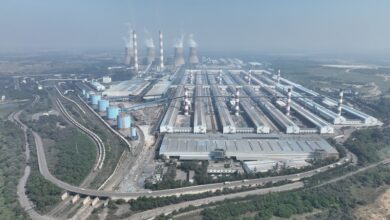
The concept of luxury in residential architecture is undergoing a profound transformation. Today’s affluent homebuyers are redefining luxury, moving beyond traditional opulence toward personalized, sustainable, and technologically integrated spaces. This evolution reflects deeper societal shifts in values and environmental consciousness.
At Viceroy Properties, we’ve witnessed this transformation through our landmark projects like Viceroy Savana and Viceroy Prive, showcasing how luxury preferences continue to evolve.
Modern Luxury: Sleek, Smart, and Minimal
Modern luxury features clean lines, open spaces, and integrated technology. Homebuyers seeking contemporary design feel drawn to simplicity—large glass facades and neutral tones that let natural light dominate.
At Viceroy Savana, homes feature expansive floor-to-ceiling windows, spacious 20-foot-wide living areas, and high-quality finishes. The architecture itself becomes a statement, with form following function. Modern buyers also value seamless indoor-outdoor living. Viceroy Prive offers spacious balconies and private decks connecting interiors with the outside world.
Classic Luxury: Timeless, Warm, and Rich
Classic luxury appeals to those valuing heritage and craftsmanship with intricate detailing, rich textures, and statement pieces reflecting permanence. These spaces tell stories through design elements that honour traditional techniques.
Buyers seeking classic luxury appreciate personal spaces rooted in tradition. Viceroy Prive features curated nooks for art displays and statement furniture, creating intimacy and exclusivity.
Sustainability: The New Luxury Imperative
The most significant shift is the emphasis on sustainability. Eco-conscious design has become central to luxury value propositions.
Viceroy Savana blends relaxation with sustainability, creating spaces where residents can recharge and reconnect with nature. Solar panels reduce electricity consumption by 16%, while water-efficient fixtures cut usage by 21.61%. Our on-site wastewater treatment plant reuses 76% of treated water, and eco-friendly materials enhance durability while reducing environmental impact.
Open Concepts vs. Defined Spaces
While open floor plans have dominated luxury design in recent years, a more nuanced approach is emerging. Homebuyers still value connectedness but increasingly seek strategic privacy and purpose-built spaces.
Flexible layouts allow homeowners to adapt spaces for work, wellness, and entertainment. Movable partitions, sliding doors, and multi-purpose rooms enable spaces to shift with changing needs — a feature that proved invaluable during recent global events. This hybrid approach ensures that homes remain functional and adaptable without sacrificing openness or aesthetic coherence.
Material Authenticity and Indoor-Outdoor Integration
Today’s luxury homebuyers demonstrate sophisticated material preferences that bridge classic and contemporary sensibilities. Natural materials with authentic character — like marble, wood, and linen — are paired with innovative manufactured surfaces that offer superior performance.
For example, polished concrete floors can be softened with natural fiber rugs, and sleek metal fixtures can contrast with warm wood cabinetry. This balance of textures and finishes creates a harmonious yet dynamic aesthetic. The focus is on authenticity — materials that age gracefully and acquire character over time.
Conclusion: Luxury as a Personal Journey
The most significant evolution may be the shift from standardized opulence to personalized experiences. Today’s affluent homebuyers seek spaces reflecting their unique identities and values.
At Viceroy Properties, we create homes that serve as frameworks for individual expression. Both Savana and Prive offer exceptional designs that can be customized to reflect each homeowner’s personal definition of luxury.
The future of luxury residential architecture lies not in choosing between modern and classic approaches, but in thoughtfully integrating elements of both to create authentic, sustainable, and deeply personal living environments.






